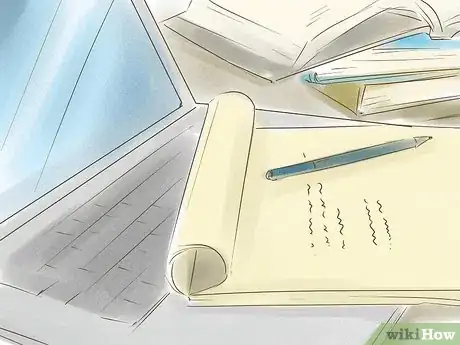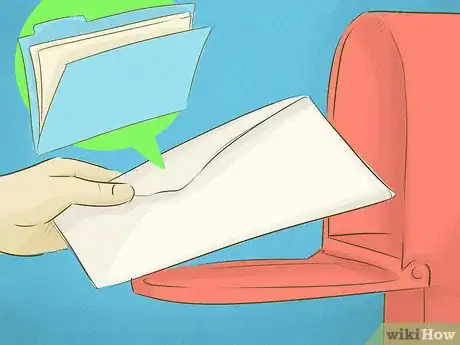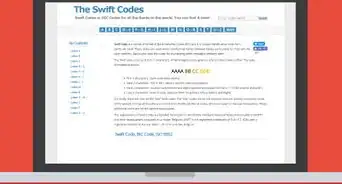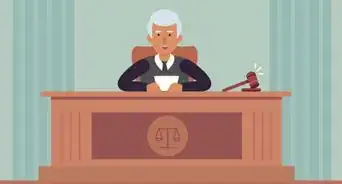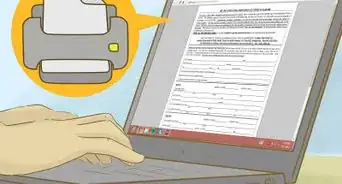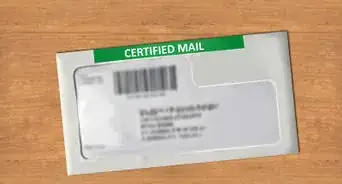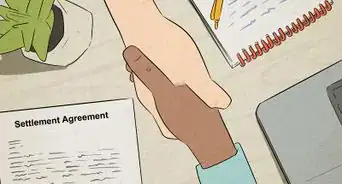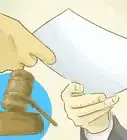This article was co-authored by Clinton M. Sandvick, JD, PhD. Clinton M. Sandvick worked as a civil litigator in California for over 7 years. He received his JD from the University of Wisconsin-Madison in 1998 and his PhD in American History from the University of Oregon in 2013.
There are 7 references cited in this article, which can be found at the bottom of the page.
This article has been viewed 47,690 times.
You might want to dispute a debit charge for a couple of reasons. First, someone might have made an unauthorized charge using your debit card. This can happen when the card is stolen. Second, you might have made a debit card purchase but be unhappy with the products or services you have received. To successfully dispute a debit charge, you should gather information about the charge and contact either your bank or the merchant.
Steps
Reporting an Unauthorized Debit Charge
-
1Identify the charge. Look at your ATM statement or debit card receipts. See if you can identify each withdrawal or purchase billed to your debit card.[1]
- If you see a purchase or ATM withdrawal that you did not authorize, then write down the date and amount. If the debit purchase was made at a store, then note the name of the merchant.
- You should enroll in your bank’s online banking system.[2] If you do, then you can monitor debit charges without having to wait for a monthly bank statement.
-
2Call your bank quickly. Federal law gives you only 60 days from the date you received the statement to notify the bank and report the error. You should call first, as this is the fastest way to bring the error to the bank’s attention.[3] Find the phone number on the back of the debit card. If your card was stolen, then find the phone number on the web or on one of your prior bank statements.
- If you wait too long to dispute the charge, then the bank has no obligation to respond.[4]
- Also, your liability will increase if you lost your card. For example, if you report a lost or stolen debit card before any purchases are made, then you are not responsible for any subsequent purchases on the card. However, if you wait longer, then you are responsible for more:[5]
- If you report within two business days, then you are responsible for a maximum of $50.
- If you wait more than two business days to report, then you are responsible for up to $500 in unauthorized charges.
- If you wait more than 60 days after receiving your bank statement, you are responsible for all unauthorized charges.
Advertisement -
3Cancel your card. When calling the bank to report the unauthorized charge, you should also cancel your debit card. By doing so, the card will be declined if the thief continues to try and use it.
- Ask the bank to issue you a new card, and make sure that you use a different PIN for the new card.
Following up with a Letter
-
1Gather necessary information. If you reported the unauthorized debit card charge by phone, the bank might request that you follow up with a letter within 10 business days.[6] Even if the bank does not require that you write a letter, it is a good idea to do so anyway so that you have a paper trail. Gather the following information:
- your name
- account number
- the dollar amount of the error
- the date of the debit charge
- why the charge is erroneous
- documentation in support, such as a copy of your ATM statement with the unauthorized charge highlighted
-
2Find a sample letter. You can use the Federal Trade Commission’s sample letter available at http://www.consumer.ftc.gov/articles/0537-sample-letter-disputing-debit-card-charge. You can revise it to suit your individual circumstances.
-
3Mail the letter. Once you have finished your letter, send it certified mail, return receipt requested to the bank. Hold onto your receipt as it serves as proof that the letter was received.
- Always keep a copy of all of your correspondence.[7]
-
4Fill out an affidavit. Your bank might require that you complete a form. It might be called an “Affidavit of Fraudulent Use.” Each bank’s form may differ somewhat, but you will generally be asked for the following:[8]
- your name and card number
- a phone number and the best time to contact you
- the date and the amount of the unauthorized transactions
-
5Provide requested documents. The bank might follow up with a request for additional information or documents. You should provide the requested information promptly. Delay will only cause you to have to wait longer for the dispute to be resolved.
-
6Wait for the bank’s decision. The bank must perform an investigation within 10 days of receiving notice of the disputed charge. If the bank cannot resolve the dispute within 10 days, your account must be credited in the amount of the disputed debit.
- However, if after 10 days the bank determines that the transaction is legitimate, then it will deduct the full amount from your account.
- The bank generally has up to 45 days to complete its investigation. You should receive a decision in writing.
-
7File a complaint with the Consumer Finance Protection Bureau (CFPB). If you are unhappy with how your dispute is resolved, you should contact the CFPB, which is a federal agency. You can visit their website at www.consumerfinance.gov/complaint in order to lodge a complaint.
- Once at the website, click on “Bank Account or Service” in order to complain about a debit card.[9]
- Provide all requested information. The CFPB will contact your bank and investigate.
Complaining to a Merchant
-
1Identify the disputed transaction. If you purchased goods from a merchant but want to dispute the quality of the goods or services, then you must contact the merchant first. Find the phone number or stop in to talk to a manager.
- You should only contact the merchant first if you know you made the purchase. If you did not authorize the purchase, then call your bank quickly.
- Find your receipt and identify how much you paid for the goods and the day you purchased them.
-
2Call the merchant. You should reach out to the merchant and explain what was wrong with the goods. Ask for a full refund.
- If the first person you talk to refuses to refund the purchase price, then ask to talk to a supervisor. Do not get angry or argue but remain firm.
- Realize that federal law does not give you the right to a refund for non-delivered or inadequate goods or services.[10] Accordingly, you need to work with the merchant and your bank.
-
3Fill out your bank’s form. If you have failed to come to an adequate resolution with the merchant, you should contact your bank. Either call or stop in. Your bank probably has a form that you can use. Although each form will vary, you typically must provide the following information:[11]
- the cardholder’s name
- the card number
- the cardholder’s phone number and the best time to be reached
- the merchant’s name
- the date you contacted the merchant
- the dollar amount in dispute
- the reason for the dispute (e.g., duplicate charge, returned merchandise, non-receipt of goods, or poor quality goods or services)
-
4Mail the form. You should send the form certified mail, return receipt requested. Also keep a copy of the completed form for your records.
-
5Wait for the results of the investigation. Your bank should contact the merchant to investigate the dispute. The precise process may vary from bank to bank.
- For example, some banks might credit your account the money until the dispute is resolved. If it is not resolved in your favor, then the money will be taken back out. Other banks won’t credit any money during the investigation.
- Generally, it can take 30-45 days for the bank to complete the investigation process.
- If you are unhappy with the result, then you can complain to the federal Consumer Finance Protection Bureau. Visit their website and fill out a complaint.
References
- ↑ http://www.nolo.com/legal-encyclopedia/how-dispute-billing-error-debit-30103.html
- ↑ http://www.consumer-action.org/downloads/english/Chase_CC_Fraud_Leaders.pdf
- ↑ http://www.nolo.com/legal-encyclopedia/how-dispute-billing-error-debit-30103.html
- ↑ http://www.nolo.com/legal-encyclopedia/how-dispute-billing-error-debit-30103.html
- ↑ http://www.ag.state.mn.us/consumer/publications/disputecreditcharges.asp
- ↑ http://www.ag.state.mn.us/consumer/publications/disputecreditcharges.asp
- ↑ http://www.consumer.ftc.gov/articles/0219-disputing-credit-card-charges
- ↑ https://www.huntington.com/pdf/Card-Dispute.pdf
- ↑ http://www.consumerfinance.gov/complaint/#bank-account
About This Article
If you spot an incorrect debit charge on your card, you can dispute it with your bank. By law, you have 60 days to notify your bank, but you should call them as soon as you can to dispute the charge. You should also ask them to cancel your card and send a replacement to avoid unauthorized charges in the future. Your bank may ask you to write a follow-up letter for their records. Include your account details and the date of the incorrect charge. Your bank should investigate your dispute within 45 days and send their decision in the mail. For more tips from our Legal co-author, including how to complain to a merchant about faulty goods, read on!



